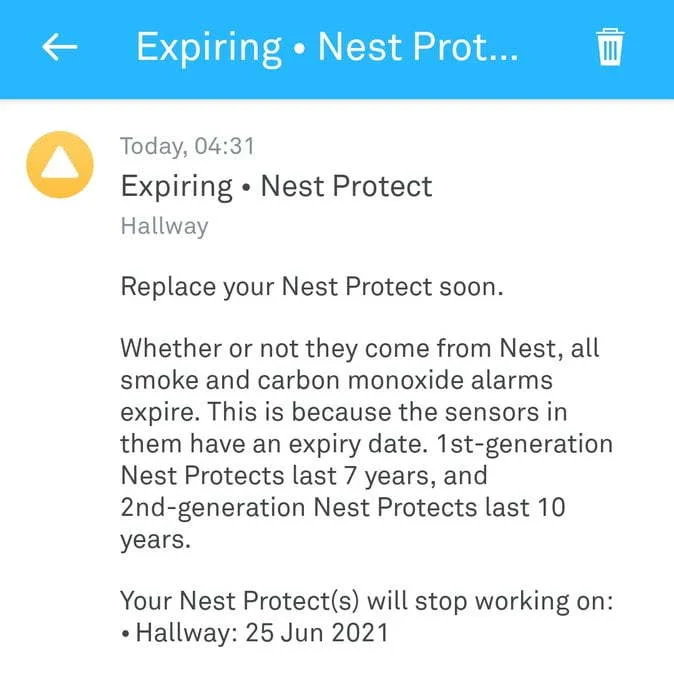

Whatever happened to IoT smoke alarms?
source link: https://shkspr.mobi/blog/2021/04/whatever-happened-to-iot-smoke-alarms/
Go to the source link to view the article. You can view the picture content, updated content and better typesetting reading experience. If the link is broken, please click the button below to view the snapshot at that time.
I’ve had a Nest smoke alarm for about 7 years. It connects to my WiFi network and occasionally pings a message to my phone that I’ve burnt my toast. Nifty!
But, due to planned obsolescence regulatory requirements, it needs to be replaced.

Back in 2014, the Nest cost £100.
In the exciting world of 2021, it costs… £100!
WTAF? Surely a combination of market capitalism and Moore’s Law means these devices should have dropped in price significantly? But I can’t find any other Wi-Fi smoke/co alarms for sale in the UK. Why is that?
(There’s a Netamo WiFi smoke detector for £90 – but it doesn’t do carbon monoxide.)
A basic smoke & carbon monoxide detector is about £20 retail. There are hundreds of models at that price point.
A basic ESP32 WiFi board is a fiver. Call it a tenner if you want something like a Raspberry Pi Zero W.
Add in the cost of running some servers, and you’re barely scraping £50. Surely there’s someone out there who wants to sell a million of these things?
But, I think I can understand why there aren’t loads of these for sale:
- Low market desire. While not exactly Internet Fridge territory – there isn’t a huge desire for mostly passive IoT devices. Things like flood sensors and open-window detectors just don’t seem to interest people.
- Compliance and insurance. I assume there’s a high cost of certification for these things. And if someone’s house burns down, but the detector didn’t warn them, then insurance companies start to fight.
- Software is hard. Nest had a troubled history. Apps need constant updating. Which either means a high cost for the device, or tying people into a subscription plan.
- Patents. I’m sure Google has a bunch of these and it probably scares off most competitors.
- Wi-Fi complexity. Wi-Fi is power hungry – which makes it hard to run on in-built batteries. It is also difficult to configure for the user – lots of faffing around with apps and having to reconfigure the device when your wireless password changes.
Alternatives
ZigBee is the low power, low cost, short range radio network for IoT. Found in lots of lightbulbs and other things. The downside is that it needs a central hub in your home in order to connect to the network. In theory, any hub should connect to any ZigBee devices – I use a bunch of generic lightbulbs with my Hue hub.
But the reality is slightly different from the theory. I can’t find any ZigBee smoke/co detectors for sale in the UK. There are a bunch which claim to work, which can be shipped direct from China. But they rarely have the requisite safety certification, and they all seem to need their own proprietary hub.
The Roost Battery is a WiFi enabled battery suitable for placing in smoke alarms. When it detects a power draw that indicates the alarm is sounding, it connects to WiFi. But, again, it isn’t sold in the UK any more.
Now what?
Do I need to be alerted that my house is burning down when I leave lockdown? No, probably not. But it’s fun!
Am I aware of the privacy risks? Yes – and I understand how to mitigate them.
Could I build my own out of a Pi and some scavenged components? Sure – but I can’t be bothered.
So, unless one of you clever lot can recommend a smart smoke & carbon mono detector which is available in the UK – it looks like I’m paying the Google Tax for the Nest. Bah!
Recommend
About Joyk
Aggregate valuable and interesting links.
Joyk means Joy of geeK